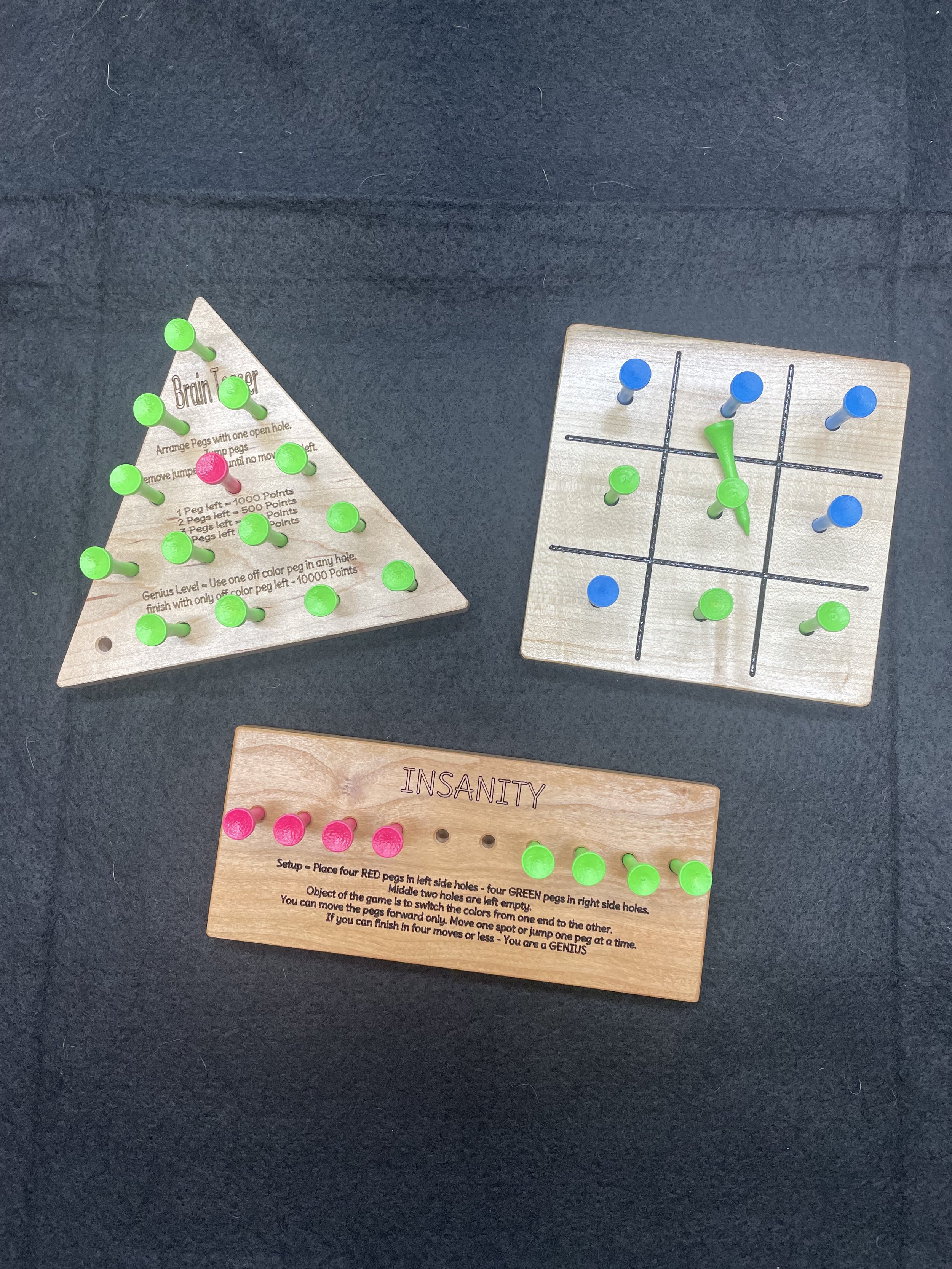



Chinese Checkers / Stern Halma
The Rules of Chinese Checkers
Chinese Checkers (or Chinese Chequers) was invented in the 1892 in Germany under the name Stern-halma and it was not until 1928 that a version called Chinese Checkers was released in America. The game is quite different to Checkers (draughts), has nothing to do with China and is based on an earlier Victorian game called Halma which is played on a square 16 x 16 chequer board.
Equipment
The Chinese Checkers board is in the shape of a six-pointed star. Each point of the star is a triangle consisting of ten holes (four holes to each side). The interior of the board is a hexagon with each side five holes long. Each triangle is a different color and there are six sets of ten marbles with corresponding colors.
Preparation
Chinese Checkers can be played by two, three, four or six players. Obviously, for the six-player game, all marbles and triangles are used. If there are four players, play starts in two pairs of opposing triangles and a two-player game should also be played from opposing triangles. In a three-player game the marbles will start in three triangles equidistant from each other.
Each player chooses a color, and the 10 marbles of that color are placed in the appropriately colored triangle.
Many rules state that any unused triangles must be left populated with their unused marbles so that they cannot be used during the game. It is suggested that the game is slightly more interesting if unused triangles are left empty so that marbles can hop through and come to rest in them, if desired.
Objective
The aim of the game is to be the first player to move all ten marbles across the board and into the triangle opposite. The first player to occupy all 10 destination holes is the winner.
Play
A toss of a coin decides who starts. Players take turns moving a single marble of their own color. In one turn a marble may either be simply moved into an adjacent hole OR it may make one or more hops over other marbles.
Where a hopping move is made, each hop must be over an adjacent marble and into a vacant hole directly beyond it. Each hop may be over any colored marble including the player's own and can proceed in any one of the six directions. After each hop, the player may either finish or, if possible and desired, continue by hopping over another marble. Occasionally, a player will be able to move a marble all the way from the starting triangle across the board and into the opposite triangle in one turn!
Marbles are never removed from the board. However, once a marble has reached the opposite triangle, it may not be moved out of the triangle - only within the triangle.
The Rules of Chinese Checkers
Chinese Checkers (or Chinese Chequers) was invented in the 1892 in Germany under the name Stern-halma and it was not until 1928 that a version called Chinese Checkers was released in America. The game is quite different to Checkers (draughts), has nothing to do with China and is based on an earlier Victorian game called Halma which is played on a square 16 x 16 chequer board.
Equipment
The Chinese Checkers board is in the shape of a six-pointed star. Each point of the star is a triangle consisting of ten holes (four holes to each side). The interior of the board is a hexagon with each side five holes long. Each triangle is a different color and there are six sets of ten marbles with corresponding colors.
Preparation
Chinese Checkers can be played by two, three, four or six players. Obviously, for the six-player game, all marbles and triangles are used. If there are four players, play starts in two pairs of opposing triangles and a two-player game should also be played from opposing triangles. In a three-player game the marbles will start in three triangles equidistant from each other.
Each player chooses a color, and the 10 marbles of that color are placed in the appropriately colored triangle.
Many rules state that any unused triangles must be left populated with their unused marbles so that they cannot be used during the game. It is suggested that the game is slightly more interesting if unused triangles are left empty so that marbles can hop through and come to rest in them, if desired.
Objective
The aim of the game is to be the first player to move all ten marbles across the board and into the triangle opposite. The first player to occupy all 10 destination holes is the winner.
Play
A toss of a coin decides who starts. Players take turns moving a single marble of their own color. In one turn a marble may either be simply moved into an adjacent hole OR it may make one or more hops over other marbles.
Where a hopping move is made, each hop must be over an adjacent marble and into a vacant hole directly beyond it. Each hop may be over any colored marble including the player's own and can proceed in any one of the six directions. After each hop, the player may either finish or, if possible and desired, continue by hopping over another marble. Occasionally, a player will be able to move a marble all the way from the starting triangle across the board and into the opposite triangle in one turn!
Marbles are never removed from the board. However, once a marble has reached the opposite triangle, it may not be moved out of the triangle - only within the triangle.







































